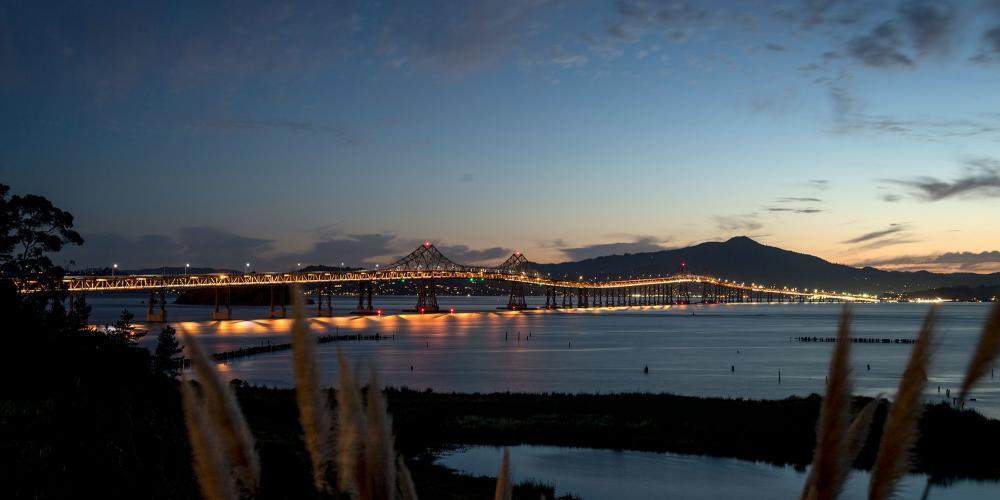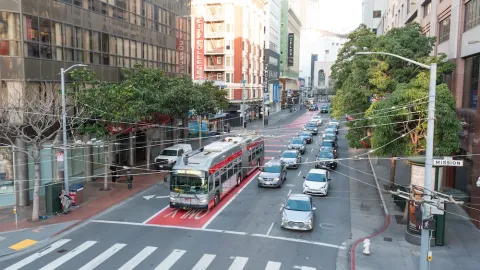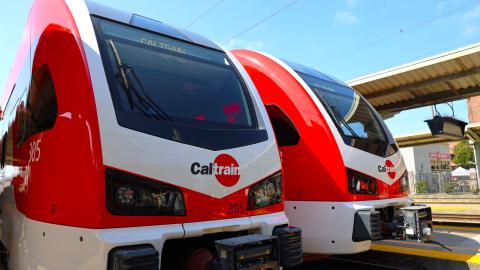
Berkeley photographer Karl Nielsen ranks among the Bay Area’s most acclaimed chroniclers of major transportation projects — and the workers who deliver them. San Francisco’s soon-to-open Central Subway and the Fourth Bore of the Caldecott Tunnel are among the 21st century construction sites at which both the intimacy and the grandeur of the construction process have been captured by Karl’s camera. Nielsen’s most recent subject is the ongoing work to replace 1950s-era expansion joints on the upper deck of the Richmond-San Rafael Bridge. And this time, his artistry includes words as well as images:
"Progress continues on arguably one of the most majestic bridges crossing the San Francisco Bay, the Richmond-San Rafael Bridge. All objects are subject to thermal expansion from changing temperatures; and the larger the object, the more potential expansion the object has. To prevent routine thermal expansion from damaging the 5.5-mile Richmond-San Rafael bridge, interlacing metal finger joints were placed between each section of the bridge when it was built. After more than 60 years of use, these joints have begun to falter and are now being replaced with more reliable rubber expansion joints that act like rubber seals you find around your car door. The work to remove the old metal joints and replace them with the new rubber joints proceeds at a blistering pace each night. In order to have the least impact on the flow of the morning commute, the work has to happen at night. And it has to be complete by morning.
Every night, the large metal joints are jackhammered out, cut free and replaced with the smaller rubber joints. To take up some of the space left after removing the large expansion joints, a new section of concrete has to be poured. The concrete has to be poured and cured in time for the morning commute. Failure is not an option. The concrete is measured out and mixed on location in a special concrete mixing truck, with as little water as possible and with accelerants added to the mix to ensure the concrete will set well before morning traffic has to pass over the repaired joint. The challenge in working with such fast-setting concrete is that because it has so little water, the concrete mix does not flow easily and potentially can set before the work is complete, leaving a solid mess that could prevent the bridge from being fully re-opened for the morning commute.
The crews that do this work late at night. They know what is at stake and work with a sense of urgency and focus every step of the way, just feet from an open lane of traffic that noticeably bounces the roadway as the work goes on. Because they know the concrete needs to be poured as fast as possible, each crew member is hurriedly shoveling concrete or smoothing the surface with finishing trowels. The challenging and dangerous work these crews do each night helps keep the bridge safe and the Bay Area humming."



Submit your comment
In order to receive a reply to your comment, please provide an email address.